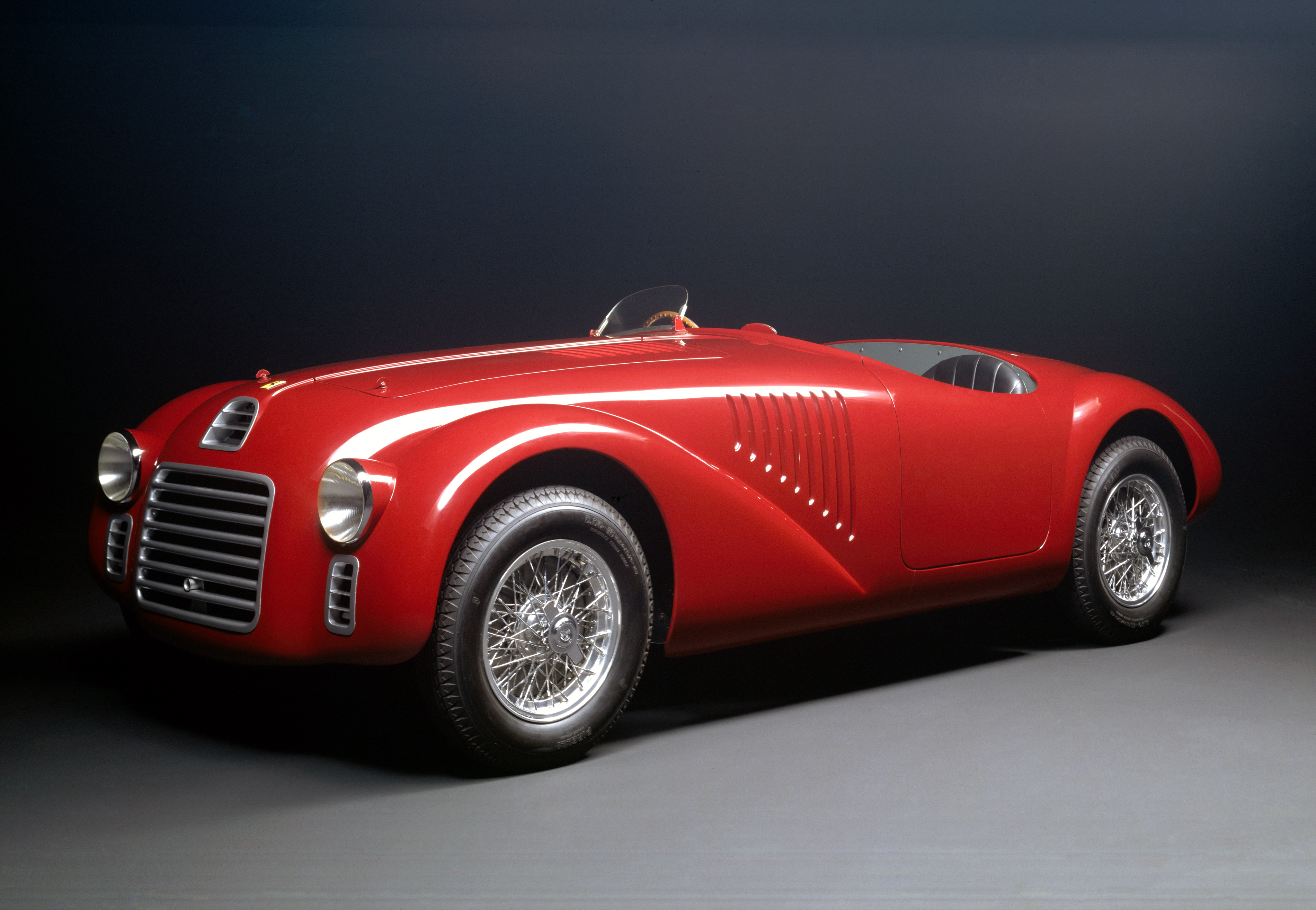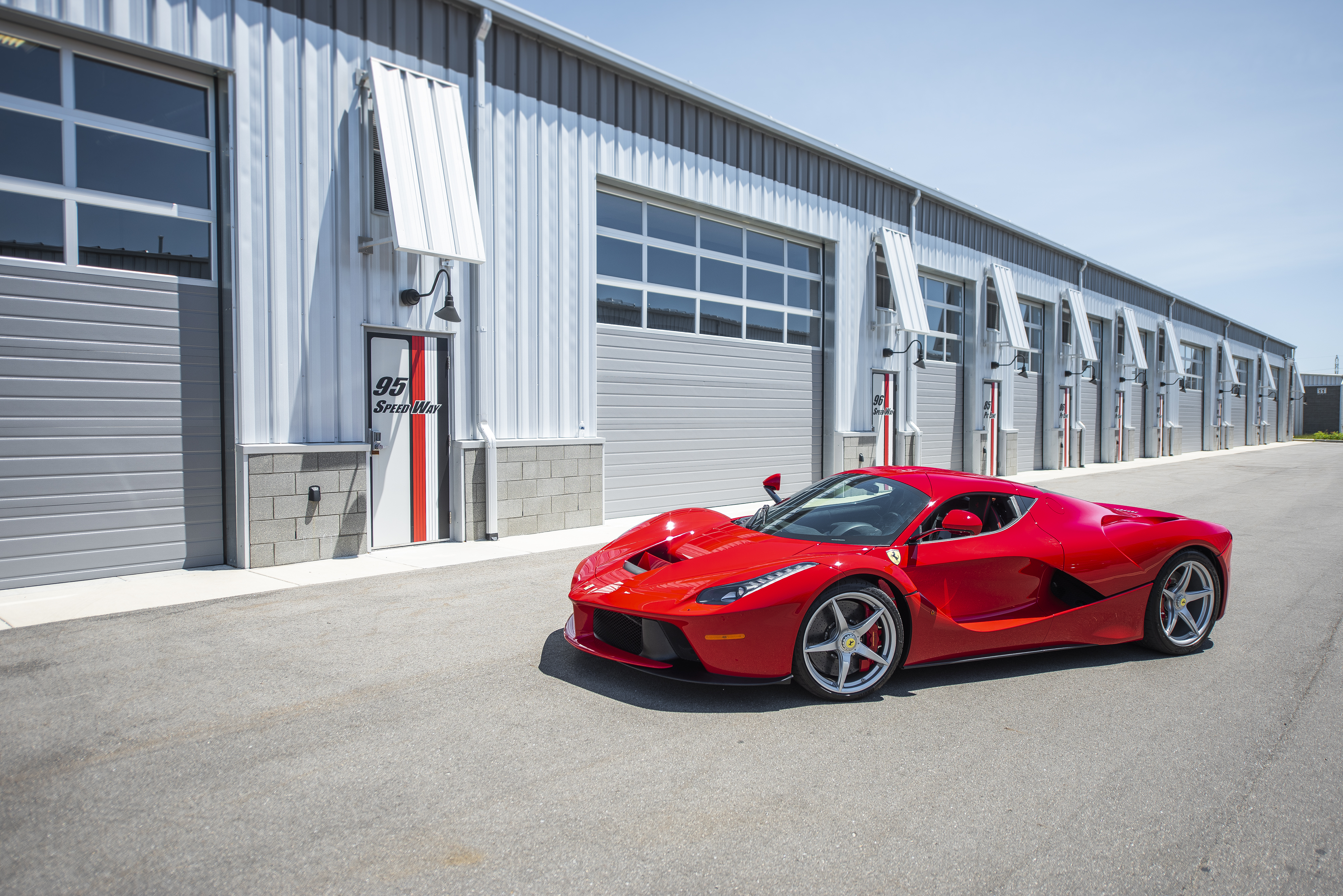From the legendary 250 GTO and F40 to icons like the SF90 Stradale, 812 Superfast, Enzo, and LaFerrari — explore Ferrari’s timeless journey through performance, prestige, and Formula 1 dominance.
Ferrari. A name that embodies speed, luxury, and a relentless pursuit of perfection. From the racetrack to the streets, Ferrari has cemented itself as one of the most revered automotive brands in history. But how did this Italian marque rise to such legendary status? Let’s take a deep dive into the origins, motorsport legacy, and cultural impact of Ferrari.
The Birth of Ferrari
The Ferrari story begins in 1939, when Enzo Ferrari founded Auto Avio Costruzioni after leaving Alfa Romeo. However, it wasn’t until 1947 that the first official Ferrari-branded car, the 125 S, rolled out of the Maranello factory. Powered by a V12 engine designed by the legendary Gioachino Colombo, the 125 S set the tone for what Ferrari would become—a brand synonymous with powerful, high-performance machines.

Ferrari 125 Sport
© : https://fr.wheelsage.org/ferrari/125_159/pictures/lk510c
Enzo Ferrari’s philosophy was simple: "I build engines and attach wheels to them." This no-nonsense approach to engineering created some of the most iconic cars the world has ever seen.
Ferrari's early models, such as the 166 MM and the 250 GTO, were masterpieces that dominated races and inspired a new generation of car enthusiasts. The 250 GTO, in particular, became the holy grail for collectors, fetching record-breaking prices at auctions decades later.
Ferrari in Motorsport
From the very beginning, motorsport was in Ferrari’s blood. The brand made its Formula 1 debut in 1950, and just a year later, Ferrari won its first Grand Prix at Silverstone. This victory marked the beginning of a long and illustrious journey in Formula 1, with Ferrari becoming the most successful and longest-running team in the sport’s history.

Scuderia Ferrari 1950
© : https://www.ferrari.com/en-EN/formula1/year-1950
Through the decades, Ferrari has amassed numerous Formula 1 World Championships. Legends like Niki Lauda, Michael Schumacher, and Fernando Alonso have all played pivotal roles in Ferrari’s success.
Schumacher’s reign in the early 2000s remains one of the most dominant periods in F1 history. Ferrari won five consecutive Constructors' Championships from 2000 to 2004, solidifying its place at the top of the motorsport hierarchy. Beyond Formula 1, Ferrari's motorsport dominance extends to endurance racing, where it has claimed multiple victories at prestigious events like the 24 Hours of Le Mans and the Mille Miglia.
And let's not forget the Ferrari 250 Testa Rossa, with its beautiful design and powerful V12 engine. It remains one of the most celebrated endurance racers of all time.

Michael Schumacher with his Ferrari 248 F1 in 2006
© : https://www.aipsmedia.com/aips/pages/articles/2024/35997.html
Ferrari and the Birth of Supercars
Ferrari didn’t just influence motorsport; it also played a pivotal role in shaping the concept of the supercar. The 1960s saw the birth of the Ferrari 250 series, including the legendary 250 GTO, a car that is now considered one of the most valuable collector’s items in the world.
Then came the 1980s, and with it, the F40—a raw, turbocharged beast that became the first production car to break the 200 mph barrier. The F40 was a statement of intent, proving that Ferrari could blend race-inspired performance with road-going capabilities. It was followed by the F50, Enzo, and eventually the LaFerrari, each representing the pinnacle of Ferrari’s technological evolution.

Ferrari Laferrari
© : https://fr.wheelsage.org/ferrari/laferrari/2013-16/pictures/w3ztl9
The Gentleman’s Agreement
During the 1990s, Ferrari was part of the unspoken "gentleman’s agreement" among Japanese and European manufacturers to limit their cars to a declared 276 horsepower. This was done in an effort to curb the escalating horsepower wars and maintain safety. But in typical Ferrari fashion, their cars often exceeded these limits in real-world performance.
Models like the F355 and 550 Maranello were proof of Ferrari's ability to balance power and drivability, delivering exhilarating performance while maintaining their reputation for luxury and prestige.
Ferrari’s Influence on Car Culture
Ferrari isn’t just a car brand; it’s a cultural icon. From Hollywood blockbusters to music videos and fashion collaborations, Ferrari represents a lifestyle of success, passion, and exclusivity. The iconic Rosso Corsa red paint and the Prancing Horse logo are instantly recognizable symbols of automotive excellence.
Think of films like "Ferris Bueller’s Day Off," where the Ferrari 250 GT California played a starring role, or the Testarossa’s appearance in "Miami Vice," cementing Ferrari’s place in pop culture history. Even today, Ferrari’s influence spans across generations, attracting both seasoned collectors and younger enthusiasts alike.

Ferrari 250 GT SWB California Spider 1960
© : https://uncrate.com/fr/article/ferrari-250-gt-swb-california-spider-1960/
Ferrari in the Modern Era
As the automotive world transitions toward electrification, Ferrari is embracing the challenge while staying true to its heritage. The SF90 Stradale, Ferrari’s first plug-in hybrid, delivers over 1,000 horsepower, combining electrification with traditional internal combustion to create an entirely new driving experience.
And then there's the Ferrari Purosangue, an SUV that aims to redefine high-performance luxury while staying faithful to the brand's DNA. Purists were skeptical at first, but Ferrari has consistently proven its ability to innovate without compromising performance.
Looking ahead, Ferrari is committed to blending tradition with innovation, ensuring that every car it produces carries the spirit of Enzo Ferrari’s original vision.

Ferrari SF90 Stradale
© : https://www.leblogauto.com/actualites/actualite/ferrari-sf90-xx-stradale-et-spider/
Final Thoughts
Ferrari’s legacy is built on passion, performance, and an unwavering commitment to excellence. Whether on the racetrack, the road, or in the hearts of enthusiasts worldwide, the Prancing Horse continues to inspire and captivate. Owning a Ferrari isn’t just about driving; it’s about becoming part of an enduring legacy that transcends generations.
















